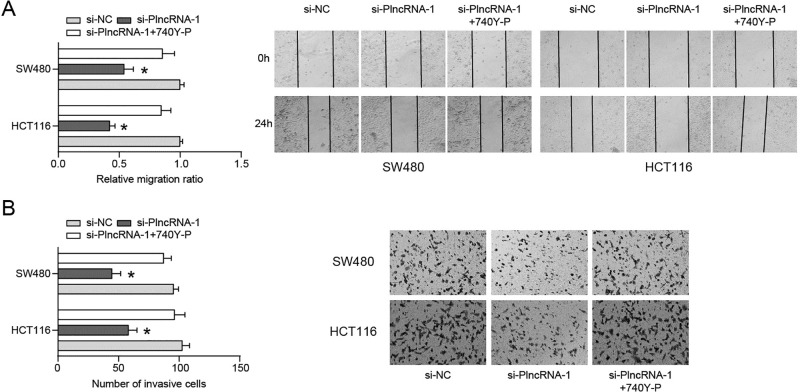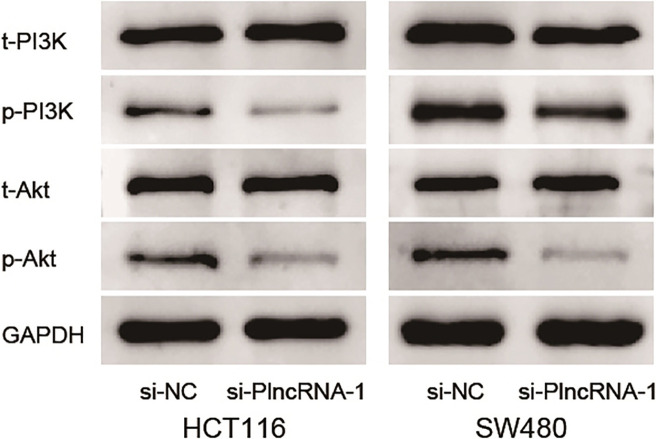The following was originally published in Volume 26, Number 2, pp. 261–268 (DOI: https://doi.org/10.3727/096504017X15031557924132). In the original article Figures 3 and 5 contained some errors that were discovered when the experiments were repeated in 2021. The corrected version of the figures is shown here, and the figures have been replaced with the corrected version in the original published article in the online site (https://www.ingentaconnect.com/contentone/cog/or/2018/00000026/00000002/art00010). The corrections to the figures do not affect any content or results of the original article.
Abstract
Accumulating evidence has indicated that long noncoding RNA (lncRNA) PlncRNA-1 plays an important regulatory role in cancers. However, the expression and biological functions of PlncRNA-1 in colorectal cancer (CRC) are still unclear. In the present study, we determined the expression of PlncRNA-1 in CRC and explored the function of PlncRNA-1 on CRC cell progression. The results showed that PlncRNA-1 was significantly increased in CRC tissues and cell lines; high PlncRNA-1 expression was associated with depth of invasion, lymph node metastasis, and TNM stage of CRC patients. Kaplan–Meier curve analysis showed that patients with high PlncRNA-1 expression had a poor overall survival. PlncRNA-1 knockdown remarkably reduced cell proliferation, migration, and invasion and promoted cell apoptosis in vitro. In vivo xenograft experiments showed that PlncRNA-1 inhibition significantly suppressed tumor growth. Finally, we used an agonist (740Y-P) of the PI3K/Akt signaling pathway; function assays showed that PlncRNA-1 exerted its effects by targeting the PI3K/Akt signaling pathway in CRC. Taken together, our data suggested that PlncRNA-1 might act as an oncogene in CRC progression and serve as a potential biomarker and therapeutic target for the treatment of CRC.
Key words: Long noncoding RNAs (lncRNAs), PlncRNA-1, Colorectal cancer (CRC), Progression, PI3K/Akt
Figure 3.
Effects of the PI3K/Akt signaling pathway agonist (740Y-P) on the role of PlncRNA-1 in CRC cell migration and invasion. (A) The wound healing assay showed that PlncRNA-1 knockdown reduced the cell migration ability of HCT116 and SW480 cells, whereas 740Y-P reversed the effect of PlncRNA-1 inhibition on CRC cell migration. (B) The Transwell invasion assay found that PlncRNA-1 suppression inhibited the cell invasion ability of HCT116 and SW480 cells, whereas 740Y-P reversed the effect of PlncRNA-1 inhibition on CRC cell invasion. *p < 0.05.
Figure 5.
Effect of PlncRNA-1 on the PI3K/Akt signaling pathway in CRC cells. The Western blot showed that PlncRNA-1 inhibition suppressed the phosphorylation of PI3K and Akt protein expression compared to the si-NC group.




